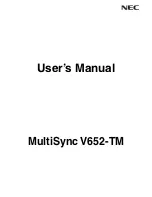
NEX7250 Zone 2 Annunciator
29
10. Alarm Sequences
10.1 Summary
Each channel within the annunciator can be set to operate in a pre-defined manner in accordance
with internationally recognised standards ISA-S18.1 1979 (R2004) alarm sequences. Typically when
an alarm occurs the associated window will flash and the operator uses specific pushbuttons to
control the audible alarm and associated lamps or LED’s:-
Test
is used to test the lamps or optional LED’s only by illuminating them in a steady on state for as
long as the pushbutton is pressed
.
System Test
is used to simulate a full functional test therefore all windows and horn circuits will
operate in accordance with the selected sequence and additional pushbuttons will need to be
pressed to step through the sequence and return the unit to its normal state.
Mute
is used to silence the audible but allow the associated alarm window to continue to operate as
per the selected sequence.
Acknowledge
will silence the audible alarm and change the state of the associated window in
accordance with the selected sequence.
Reset
will return the alarm to the normal off state only if the unit has been acknowledged and the
associated alarm contact has returned to its normal non-alarm state.
First Reset
is used after acknowledge to reset the flash sequence on the first alarm to occur within
a defined group of alarms. Once first reset has been pressed the next alarm to occur within the group
will flash at the first-up alarm rate.
10.2 Audible Alarm Grouping
Each channel within the annunciator can be set to operate the audible alarm relays as follows:-
1. Critical horn relay
2. Non critical horn relay
3. Both the critical and non critical horn relay
4. Neither of the horn relays (Typically status only alarms)
Please note channels, which are set to operate the critical horn relay, will automatically operate the
internal piezo buzzer.
10.3 Ringback Audible
When using ISA “R” ringback sequence the MULT relay can be set to operate as a ringback audible
if required. The ringback audible would normally have a distinct tone to allow the operator to
distinguish between a standard alarm and an channel that has returned to normal and needs to be
reset.
















































